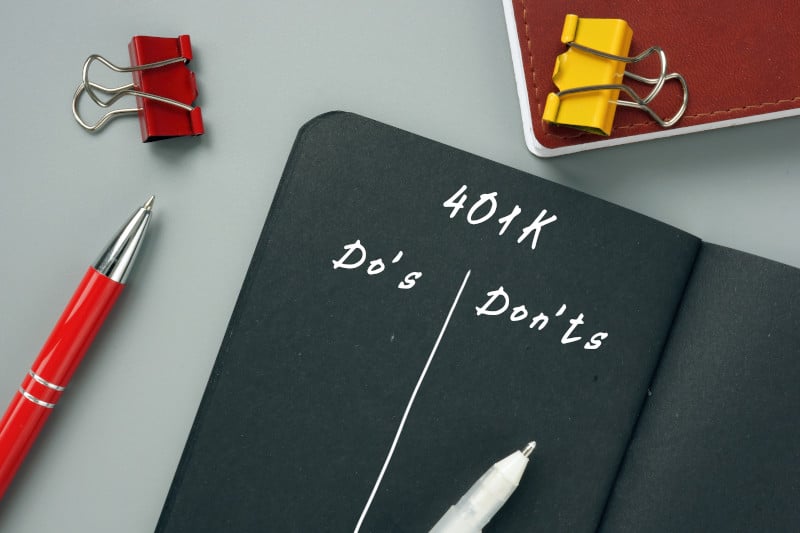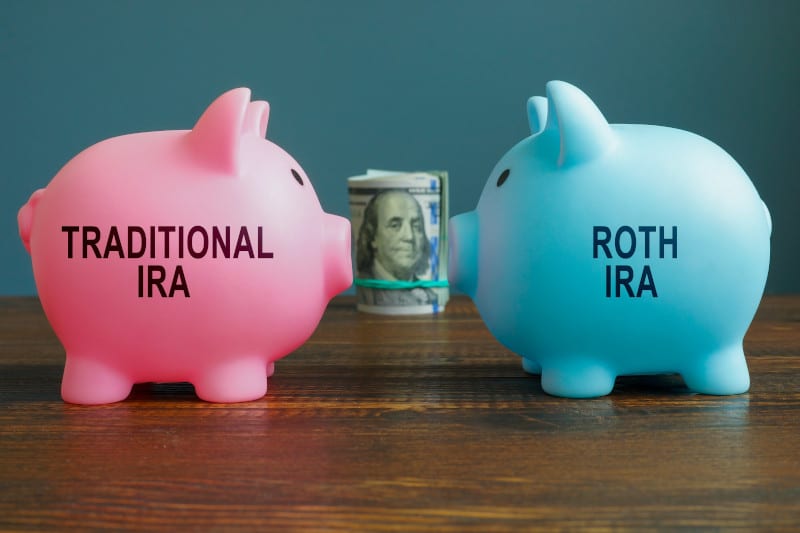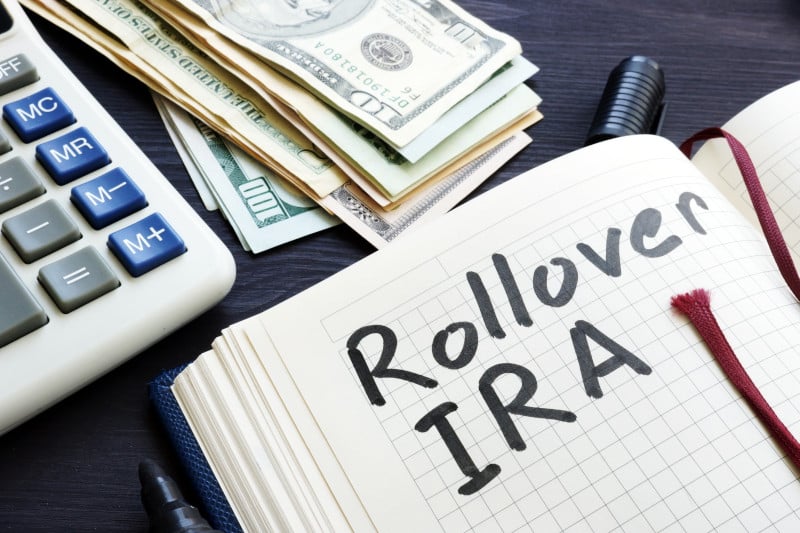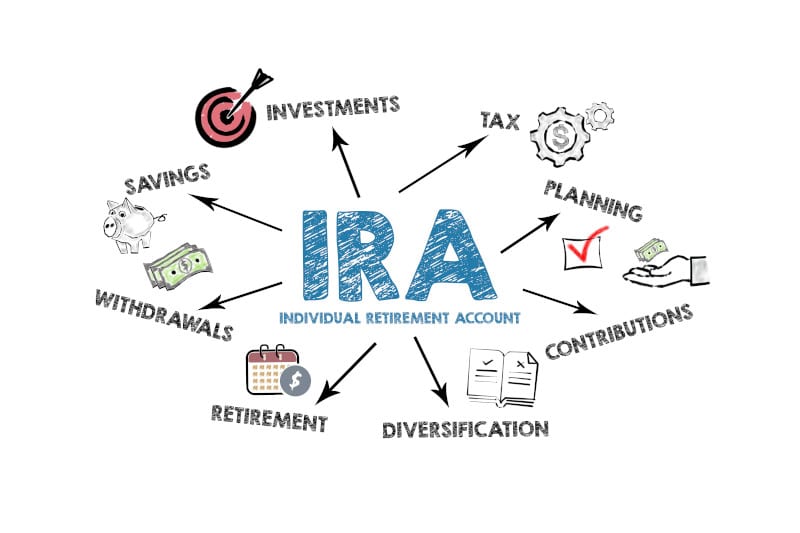 Millions of Americans have become financially secure through hard work and diligent saving. But they didn’t just sock their money away into a bank account or stuff it under the mattress.
Millions of Americans have become financially secure through hard work and diligent saving. But they didn’t just sock their money away into a bank account or stuff it under the mattress.
Growing your wealth means saving but also investing, putting the money you’ve saved to work for you. But many people don’t know how to do that, and don’t know which investment assets might best serve their financial goals and needs.
Stocks and bonds are popular traditional financial investments, although they are subject to a great deal of risk. Bond markets, for instance, have been thrown into disarray in recent years after the Federal Reserve’s rate hikes, and now the future movement of bond rates and prices is tough to predict.
Stocks, too, can be subject to major losses, as we saw in 2020 and again in 2022. And with recession fears rising, there’s a real chance that stock markets could sustain large losses during the next financial crisis.
That’s why many people choose to protect their financial well-being with precious metals like gold. Gold’s performance has actually outperformed that of the broader stock market thus far in the 21st century.
And if the next recession causes stocks to plummet while gold rises, gold’s performance in relationship to stock markets could become even greater. But for many investors who want to buy gold, the question they have is: how do I buy gold?
For many people today, a 401(k) account is their primary investment vehicle. These employer-sponsored plans have become incredibly popular, and employees have invested over $11 trillion in them.
But if you invest through a 401(k) plan, you may have noticed that there’s not a “Buy Gold” option within your plan. Many 401(k) plans offer limited investment options, and gold often isn’t one of them.
However, that won’t stop dedicated investors who are determined to benefit from owning gold. With a little bit of thought and planning, you too can buy gold with your 401(k) assets.

Your 401(k) Plan Explained
401(k) plans are employer-sponsored retirement plans that offer employees the ability to contribute money from their paychecks before taxes into a retirement plan. Section 401(k) of the Internal Revenue Code allows individuals to make contributions to a retirement account in a tax-deferred manner.
Those funds are then invested and grow tax-free until the investor decides to or is required to take a distribution. This means that they will not be taxed on their contributions until they take a distribution (at age 59½ or later).
Because the money invested is taken out before taxes, that also reduces the employee’s taxable income, leading to lower income tax payments in the present. Many employers offer matching contributions up to a certain amount, with the average employer contributing about 4.8% of an employee’s salary.
Very often that’s free money on the table for employees to take advantage of, allowing them in some cases to double their annual 401(k) contributions. For 2024, the maximum amount employees can contribute to a 401(k) is $23,000, and the maximum total combined employer and employee contribution is $69,000.
If you only want to stick to investing in stocks and bonds, investing through a 401(k) plan can be a good choice, especially if your 401(k) plan offers a wide array of investment options. But if you want to invest in alternative assets, including precious metals like gold and silver, 401(k) plans often don’t offer those kinds of options.
Like most IRAs, 401(k)s are subject to required minimum distributions (RMDs), which require investors aged 73 and older to take a specific amount in distributions each year. Without dedicated planning, RMDs could cause you to pull more money from your retirement accounts than you want, which could subject you to more taxes than you would like.
What Are the Benefits of a 401(k) Plan?
There are many benefits to a 401(k) plan, including:
- Allowing employees to save money easier by automatically withdrawing from their paychecks into their retirement accounts.
- Employer matching contributions to help employees build their nest egg for retirement.
- Tax-deferred contributions, meaning that the money you contribute to your 401(k) will not be taxed until you decide to take a distribution in the future.
- Potential for borrowing from your 401(k) to pay for: unforeseen medical emergencies, burial or funeral expenses for the family, education, purchase of a principal residence, to prevent eviction, and to repair damage to your principal residence after certain casualty losses. While this is an option, it may hamper your future retirement savings.

401(k) Contribution Limits for 2024
For 2024, individuals are able to contribute up to $23,000 to a 401(k) plan, an increase from the $22,500 401(k) contribution limit in 2023. IRS also allows employees older than 50 to make “catch-up” contributions to 401(k) accounts to help boost their savings before retirement. The limit for catch-up 401(k) contributions was $7,500 for 2023 and remained $7,500 in 2024.
It’s common for many companies to make contributions to employees’ 401(k) plans too, but there are limits to how much employers can contribute. For 2024 the maximum combined employer and employee 401(k) contribution is $69,000, or $76,500 with catch-up contributions.
These limits will most likely increase again in 2025, as they are indexed to inflation. The official IRS figures are normally published in late October or early November, so if you really want to stay on top of things, you can browse the IRS website in the fall to find updated numbers.
Highly-Paid Employee 401(k) Contribution Limits
Because well-paid employees can contribute more money to 401(k) plans than those who make less money, IRS wanted to make sure that 401(k) plans weren’t disproportionately benefiting high rollers. Thus, there are limits as to how much highly-compensated employees (HCE) can contribute to a 401(k) plan.
The threshold for being a highly-compensated employee for 2024 is $155,000. Once your compensation exceeds that threshold, your ability to max out a contribution to a 401(k) plan can be significantly reduced if your company designates you as a highly-compensated employee.
If you find out after the fact that you are a highly-compensated employee, any excess money you contributed will be refunded to you, and you’ll then owe taxes on that additional compensation.
If you’re at or near that highly-compensated employee threshold, you’ll want to contact your company’s HR, benefits, or payroll department to see whether you’re considered highly-compensated. It also can’t hurt to contact a financial adviser to see how you can plan for retirement if your ability to max out contributions to a 401(k) plan is hampered.

Understanding 401(k) Rules
Contribution limits to 401(k) plans exist because the IRS didn’t want just highly-paid employees to benefit from the tax advantages of a 401(k). The IRS wanted all employees at every level to be able to save and invest for retirement.
If you find yourself maxing out your 401(k) contributions, or if you find that you’ve hit a lower 401(k) contribution limit because of your income level, there are other ways to save for retirement that are similarly tax-advantaged.
You can start an individual retirement account (IRA), which also offers the same tax advantages as a 401(k) plan. Annual IRA contribution limits for 2024 are $7,000, or $8,000 for those over age 50.
You can even start a gold IRA, which can place your assets into physical gold. Funding a gold IRA can be done either through annual contributions ($7,000 limit) or through a gold 401(k) rollover. That’s an especially popular option for those whose 401(k) investment options are limited, or who want to protect their 401(k) assets from losing value during a stock market crash.
Why Start a 401(k) Retirement Plan?
While 401(k) retirement plans are newer than IRA accounts, they have become one of the most popular retirement plans for many American workers. That’s because more and more companies are offering workplace 401(k) programs, allowing workers to deposit money from their paychecks directly into a 401(k) investment plan.
That ease of investment has resulted in trillions of dollars of money being invested in various 401(k) programs. It doesn’t hurt that many employers also offer matching contributions, helping their workers build up their nest eggs.
Some 401(k) programs offer their investors a diverse array of funds in which to invest, sometimes offering dozens of choices. That allows investors to invest in small-cap, mid-cap, or large-cap funds, and bond funds.
Other 401(k) plans offer exchange-traded funds that invest in commodities or foreign currencies. And by deducting money before taxes, investors can put more money to work for them than if they were to invest their post-tax salary on their own.
401(k) plans work well for people who want a retirement plan that is easy and doesn’t require a huge amount of financial research. And with the tax advantages of a 401(k), the ability to transfer funds to another retirement account, and the ability to do a 401(k) to IRA rollover, 401(k) plans offer investors a significant amount of flexibility.
Challenges and Drawbacks of a 401(k) Retirement Plan
401(k) plans have their drawbacks too. Many 401(k) plans don’t offer their employees a huge variety of investment options.
So, if the funds you’re able to invest in aren’t the best performing, or if their management fees are too high, your investment performance will be suboptimal. You also don’t have ready access to the funds in your 401(k) account, as you’re not able to take distributions from your account until you reach age 59½.
With very few exceptions, such as buying a first home or paying for certain medical expenses, trying to remove funds from your 401(k) account before that age will result not only in having to pay taxes on that distribution, but also in an additional 10% tax penalty.
If you invest in a workplace 401(k) program and leave your employer, in many cases your investments will automatically be placed into a low-yielding cash or money market fund. In some cases that could leave your investments subject to the combined effects of management fees and inflation, causing you to actually lose money.
If you’re going to invest through a 401(k) plan, make sure that you have a good idea of what kind of performance you want to achieve and how you plan to invest your money. And if you want to explore the possibility of buying alternative assets like gold with your 401(k), you’ll want to do your homework first.

How to Buy Gold With Your 401(k)
If you want to use your 401(k) assets to buy gold, starting a 401(k) plan can be a good first step before eventually buying gold. Then you can use your 401(k) assets to gain exposure to the gold market in a few different ways.
There are three primary methods by which investors can gain exposure to gold with 401(k) funds. Those are through investing in gold funds, investing in gold ETFs, or rolling over 401(k) assets into a gold IRA.
1. Gold Funds
Some 401(k) plans offer their investors the opportunity to invest in precious metals funds. These funds often invest in the shares of gold mining companies.
The thinking is that if gold prices rise, mining companies will make more money and their share prices will increase. But that isn’t always the case, as rising costs of doing business, labor disputes, political instability, etc. may act as a drag on gold mining companies.
Some precious metals funds may offer additional exposure to precious metals through metal holdings or purchasing shares in gold exchange-traded funds (ETFs). While you’re not actually buying physical gold with a 401(k), you’re still gaining exposure to gold markets.
2. Gold ETFs
Occasionally, employees may find themselves investing in a 401(k) plan with a brokerage option. That enables them to invest their assets through a regular brokerage account while still maintaining the tax advantages of their 401(k) plan.
The advantage of a brokerage account is that it offers employees the ability to invest in a wider range of assets, such as gold ETFs. Gold ETFs are funds that purchase gold and then offer shares in their fund for sale to investors.
One of the major downsides to gold ETFs is that you’re not actually buying physical gold, nor can you convert your shares to physical gold. So again, while you can buy gold assets with your 401(k) assets through an ETF, you’re still not investing in physical gold, just in shares of a fund that holds physical gold.
3. Gold IRA
If you are dead set on buying physical gold with a 401(k), your best bet could be a gold 401(k) to IRA rollover. A gold IRA rollover means that you roll over existing assets from a 401(k) plan into a new gold IRA.
That gold IRA becomes the investment vehicle that you use to purchase physical gold coins and gold bars. These 401(k) to IRA rollovers occur tax-free in most cases, and there is no limit to the amount of money you can roll over.
The coins or bars that you decide to buy with your gold IRA are managed by a gold IRA custodian and are stored at a bullion depository. As with other IRA accounts, your gold IRA accrues gains tax-free, and taxes are only paid when you take a distribution.
Once you decide to take a distribution, you can take that distribution either in gold or in cash. And the same required minimum distribution (RMD) rules apply to gold IRAs as apply to all other IRAs.
Benefits of Owning Gold
Owning gold is a time-tested way to protect hard-earned assets against economic uncertainty and financial turmoil. If you’re worried about your tax-advantaged retirement savings losing value during an economic downturn, you can help keep those assets protected with a simple 401(k) to gold IRA rollover.
With gold having recently hit all-time highs and showing signs of continuing strong growth, now is the time to take advantage of gold’s potential. By buying physical gold through a gold 401(k) to IRA rollover, investors can take advantage of the fact that they’re investing in a tangible physical asset that has been in demand for centuries and will continue to be well into the future.
Investors who are worried about their 401(k) losing value can roll over their funds into a gold IRA tax-free, potentially sparing themselves massive losses in the event of a market crash. And with gold looking poised to continue gaining value in the future, gold offers the possibility of keeping your assets safe and secure.

401(k) to IRA Rollover Rules
Rollovers allow you to move existing retirement assets from a 401(k), 403(b), TSP, or similar retirement account into an IRA. Since rollover contributions are not subject to the annual IRA contribution limits, they can be a useful tool in building up your retirement savings.
In general there are three types of rollovers:
- Direct Rollover – a direct rollover occurs when a distribution from a 401(k) or similar retirement plan is made directly to another retirement plan or to an IRA account. No taxes are withheld from this rollover.
- Trustee-to-Trustee Transfer – this transfer occurs when a distribution from an IRA occurs and the distribution amount is sent directly from the first IRA custodian to another IRA custodian or to a retirement plan. No taxes are withheld from this transfer.
- 60-Day Rollover – this rollover occurs when a distribution from an IRA or retirement plan is made to you. You then have 60 days to roll over all or a portion of that distribution into an IRA or retirement plan. Because taxes will be withheld from this distribution, you will have to use other funds if you wish to roll over the full amount of the distribution.
Because of the potential tax consequences of a 60-day rollover, people who want to move a 401(k) to a gold IRA without penalty generally choose the direct rollover or trustee-to-trustee transfer. These ensure that their retirement savings are rolled over without taxes or penalties.
Additionally, there is a one-per-year IRA rollover rule. This means that you can only make one rollover from the same IRA per year.
You also can’t within that 1-year period make a rollover from the IRA to which you distributed that rollover. You can read more about it at the IRS website.
This one-per-year rule does not apply to:
- rollovers from traditional IRAs to Roth IRAs (Roth conversions)
- trustee-to-trustee transfers to another IRA
- IRA-to-plan rollovers (e.g. IRA to 401(k))
- plan-to-IRA rollovers (e.g. 401(k) to IRA)
- plan-to-plan rollovers (e.g. 401(k) to 401(k))
There are additional restrictions on rollovers, such as the fact that RMDs cannot be rolled over. When you decide on doing a rollover, the IRS website has lots of useful information on the topic, including a rollover chart that shows which accounts can be rolled over into which.
You may also want to consult a tax professional to ensure that you aren’t making mistakes that could subject yourself to unnecessary taxes.

Who Can Invest in an IRA?
Anyone with earned income, and their spouses if married filing jointly, can start and contribute money to an IRA. You can contribute to an IRA even if you have a 401(k) or similar retirement plan at work. The only limit is to how much money you are able to contribute to your accounts.
Types of IRA Accounts
If you are eligible to start an IRA, there are numerous types of IRAs available. These include:
- Traditional IRA: Invests with pre-tax dollars, gains accrue tax-free, withdrawals are taxed as regular income. If your income is below certain thresholds, your contributions to an IRA may be tax-deductible.
- Roth IRA: Contributions aren’t tax deductible and are made with post-tax dollars. Earnings and withdrawals are not taxed.
- SEP IRA: Simplified Employee Pension, which is similar to a Traditional IRA, but is funded by an employer or self-employed individual.
- SIMPLE IRA: Savings Incentive Match Plan for Employees, which is similar to a 401(k) plan, but has lower contribution limits and lower administrative costs.
- Self-Directed IRA: Follows the same eligibility and contribution rules as a Traditional or Roth IRA, but with the ability to invest in alternative assets like real estate and precious metals, such as a gold IRA.
Because these accounts provide tax benefits for retirement savings, there are an abundance of IRA investment rules that must be followed. These rules include requirements for contributions, withdrawals, and the types of assets that can be included in your portfolio.
We’ll start off with some general IRA rules and then focus more specifically on self-directed IRAs and the gold IRA rules that you need to know to make the most of your investments.
General IRA Contribution Rules
The IRS sets contribution limits on IRAs, which must be followed in order to avoid penalties. The following guidelines will help you understand contribution limits for IRAs:
- Limited to $7,000 in contributions per year ($8,000 if you’re over age 50).
- Contributions are across all IRAs, so if you have multiple IRA accounts, you are limited to that $7,000 total across all your accounts.
- Contributions are per person, not per account–potential to contribute to multiple IRAs in the same year.
- Rollovers or transfers from 401(k), TSP, IRA or similar accounts into an IRA or other eligible retirement plan are not subject to annual contribution limits.
IRA Penalties
The IRS sets forth penalties for not following regulations dealing with retirement accounts. Here are a few IRA investing rules to be mindful of so you know how to move a 401(k) to a gold IRA without any penalties:
- If you exceed the annual contribution limits, you may incur a penalty of 6% per year. Example: if you exceed the contribution limit by $500, you would be penalized $30 every year until the mistake is corrected
- If you have an IRA, you are not allowed to invest in collectibles, which includes artwork, rugs, antiques, stamps, and other items as defined by subsection 408(m)(2) of the Internal Revenue Code. Tax penalties may result. This does not include qualified precious metals that are exempt under subsection 408(m)(3).
- Withdrawing any distributions before reaching the age of 59½ incurs a 10% penalty plus any taxes due. Exceptions include death or disability of the IRA owner, withdrawals to pay certain medical bills, first time home purchases, and higher education expenses.
Tax-Deductible IRA Contributions
Investing in an IRA to reduce taxes is not uncommon, but there are deduction limits set by the IRS to be aware of. Some general rules include:
- Roth IRA contributions cannot be deducted.
- Work retirement plan deductions may be limited if you or your spouse are covered by a retirement plan through your employer, and if your income exceeds certain levels.
- No work retirement plan means you are allowed to take a deduction in full if you and your spouse (if married) aren’t covered by an employer-sponsored retirement plan.

How to Move Your 401(k) to Gold Tax-Free
Retirement planning isn’t something that you start doing when you’re a few years away from retirement. It’s something you start as early in your career as you can. There’s no substitute for time in the market when it comes to building up your retirement savings.
As you get older, you may start looking into more ways to protect the money you’ve already put aside for retirement. If you have a 401(k) from a previous employer that is sitting idle, or if your current 401(k) options don’t leave you enthused, a 401(k) to IRA rollover could offer you more investment options to put your money to better use.
One popular 401(k) rollover option is to roll over 401(k) assets into a gold IRA. The rollover process can allow you to move your 401(k) into gold tax-free and penalty-free.
A gold IRA is a type of self-directed IRA, an IRA that allows you to take greater control over your assets. Moving retirement savings into a self-directed IRA can give you the potential for more investment options like real estate, private bonds, private equity, and precious metals like gold and silver.
Investing in precious metals is a popular option because gold and silver have been used as a time-tested means of storing wealth that can weather numerous economic changes, giving your portfolio diversity and stability. The price of precious metals often increases even in tough economic times, meaning that your portfolio can still get a boost even during the worst throes of a financial crisis.
Like all 401(k) and other retirement plans, a gold IRA has rules and regulations that you need to be aware of. The last thing you want to do is decide to roll over your 401(k) and be hit with taxes and penalties because you didn’t do things correctly.

Gold IRA Rules
Buying gold can be a great way to keep your portfolio diversified, but to take advantage of it and maximize your savings, you should be aware of the self-directed and gold IRA rules.
First, it’s important to understand the rules that govern self-directed IRAs and acceptable investments as a whole. These include subsection 408(m) of the US tax code, which prohibits IRA accounts from acquiring collectibles and defines collectibles as:
- “any work of art,
- any rug or antique,
- any metal or gem,
- any stamp or coin,
- any alcoholic beverage, or
- any other tangible personal property specified by the Secretary for purposes of this subsection.”
There are, however, exceptions made for some coins and bullion in subsection 408(m)(3), namely:
- Gold and Silver American Eagle coins minted by the US Mint are not considered collectibles.
- Other gold coins or bars must have a fineness “equal to or exceeding the minimum fineness” of a contract market, which for gold is .995, or 99.5% purity.
- Gold must be held by an IRA custodian. Home storage of IRA assets is illegal and can result in massive fines and penalties.
In addition, If you already own gold, you cannot add that gold to your IRA. But you can open a gold IRA and purchase new gold to add to your IRA.
Additional IRA-Eligible Precious Metals
You can also invest in other types of precious metals coins and bullion that meet IRS specifications. Those include silver, platinum, and palladium that meet the following minimum fineness requirements:
- Silver – .999
- Platinum – .9995
- Palladium– .9995
The Pros of a Gold IRA
A gold IRA is an investment vehicle that allows investors to invest in gold coins or gold bullion. Just like most other IRAs, most funds invested in gold through a gold IRA come from pre-tax dollars and taxation is deferred until investors decide to or are required to take a distribution. This allows you to benefit from investing in gold while still enjoying the same tax treatment as a conventional IRA.
A gold IRA isn’t available from most financial institutions, which prefer to push investors into stocks and bonds from which they can gain commissions. But a gold IRA can be a powerful tool that can help you diversify your portfolio and protect your assets against inflation, stock market crashes, and financial turmoil.
Gold has been trusted by investors for centuries, as it is the ultimate source of wealth. That’s why central banks, despite their creation of vast amounts of paper money, still maintain large holdings of gold bars. When paper investments lose their value, gold is still there in the vaults maintaining its value.
If you’re nearing retirement, a gold IRA can be one way to lock in gains made from stocks or bonds held in a 401(k) or IRA. A gold IRA can also be a good investment for younger investors who want to grow their assets over the long term and who don’t want to risk the boom and bust nature of financial markets.

What to Consider With a Gold IRA
A gold IRA, like any other investment, has a cost. You will have to pay to set up a gold IRA, and you will have to pay your IRA custodian and bullion depository to safeguard and insure your gold.
These fees are generally fixed at a couple hundred dollars a year, no matter how much gold you own. So the more gold you buy, the less those fees become as a percentage of your total holdings.
Then there’s the matter of taking distributions and calculating taxes. You can choose to take distributions in cash, or you can take physical delivery of your gold.
If you opt for physical delivery, then you’ll be responsible for storing that gold going forward, which introduces its own difficulties. And in either case, you’ll have to calculate the amount of taxes that you’ll owe the government once you take a distribution.
Finally, if you’re only interested in short-term gains then a gold IRA is probably not right for you. Buying gold is not a get rich quick scheme, it’s a long-term proposition that can offer stable growth to younger gold owners and stable asset value to older gold owners.
How to Start a Gold IRA Rollover
The desire for better performance or for the ability to own a wider variety of assets are some of the reasons many people choose to do a 401(k) to gold IRA rollover. While the process can sound daunting, working with professionals who have years of experience with the process can make everything go seamlessly.
Goldco has helped thousands of customers navigate the gold IRA and gold purchase process, with over $2.5 billion in precious metals placements. And our dedication to customer service is why we have over 6,000 5-star reviews from our customers.
Once you’ve familiarized yourself with the IRA rules and think you’re comfortable with moving your 401(k) to a gold IRA, you’ll want to learn the steps to starting your gold IRA. You can contact the experts at Goldco to get started.
The process of starting a gold IRA rollover requires informing the existing custodian of your 401(k) assets that you intend to roll over those assets. The funds are then sent from your current custodian to the new custodian that you designate to hold the gold that you wish to purchase for your new gold IRA.
Once your new gold IRA custodian has received those funds from your previous custodian, you then decide which gold or silver coins, or gold or silver bars, you wish to purchase. Those coins or bars will then be delivered to the bullion depository you choose, who will take care of securing and storing your gold assets.
The whole process shouldn’t take any more than a couple of weeks, and then you’ll be able to reap the benefits of your new gold IRA. And because a 401(k) to gold IRA rollover can be done absolutely tax-free, you can benefit from owning gold without having to worry about additional taxes.
With a gold IRA you can get the best of both worlds: the tax advantages of a traditional 401(k) or IRA retirement account combined with the stability and asset protection of gold. Don’t wait until your 401(k) account starts to lose value before you decide to protect your retirement savings.
Contact the experts at Goldco today to find out more about a 401(k) to gold IRA rollover so that you can make gold a vital part of your investment portfolio.
This article was originally published in April 2019 and was updated in August 2024.

